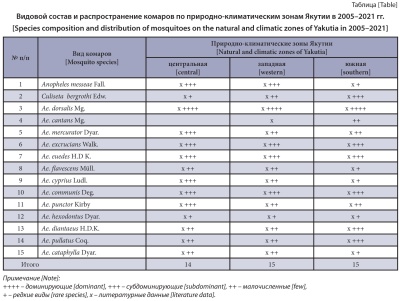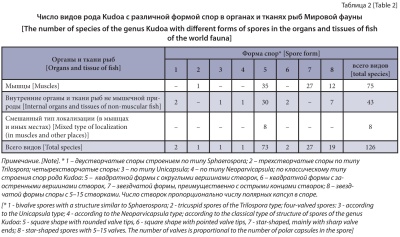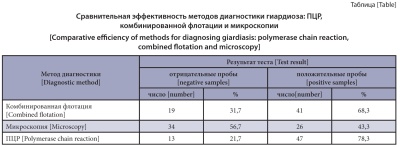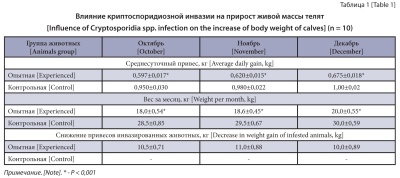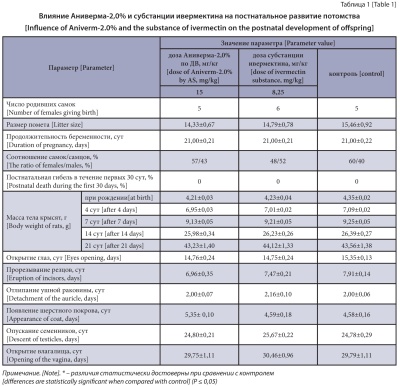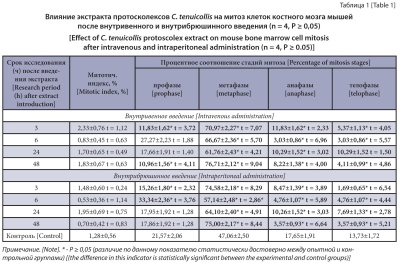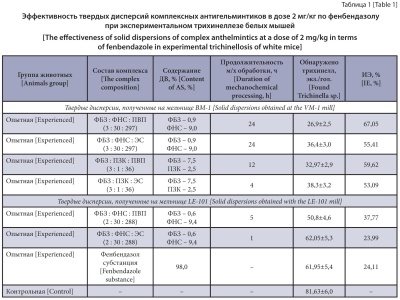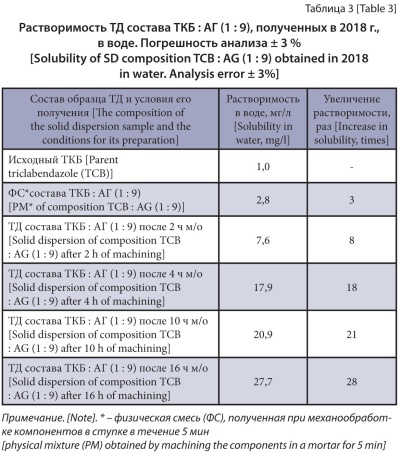FAUNA, MORPHOLOGY AND SYSTEMATICS OF PARASITES
The purpose of the research is to study the helminth fauna and the structure of helminthocenoses of Karakul sheep in the Khorezm Oasis of Uzbekistan.
Materials and methods. The material for this study was helminths collected by conventional methods from Karakul sheep from farms of different types in the Khorezm Region. A total of 13 sheep were studied. To identify the dominant helminth infections in sheep, 110 sets of individual organs were examined by the method of partial helminthological dissections. Helminths were collected in slaughterhouses of the Bagat, Kushkupyr, Urgench, Yangiaryk and Shavat Districts of the Khorezm Region. Additionally, the helminths collected from sheep in the Khorezm Region for 2015–2021 were used.
Results and discussion. We found that the helminth fauna of Karakul sheep from the Khorezm Oasis was represented by 22 species of the classes Cestoda, Trematoda and Nematoda. Cestodes were represented by 6 species, trematodes by 3 species, and nematodes by 13 species. The faunistic composition of helminths in studied animals was noticeably depleted as compared to other Uzbekistan regions due to natural and ecological conditions of the Khorezm Oasis. The total helminth infection rate in sheep was 100%. The intensity of infection varied depending on the season of the year and the age of sheep and ranged from tens to several thousand specimens. Almost all organs and systems of the animals were found to be ecological niches of the above helminths. Most of helminth species were common to both domesticated and wild ungulates.
The purpose of the research is to study the species composition and ecology of mosquitoes in Yakutia.
Materials and methods. The research was performed for herd horses and cattle on pastures in Central, Western and Southern Yakutia in 2005–2021. Faunistic collections were made and the number of blood-sucking mosquito imago was recorded for animals using an entomological net with removable bags, while the average abundance rate of mosquitoes was calculated per 10 net movements in a figure-eight pattern around from 10 repetitions when studying the seasonal abundance dynamics and from 5 repetitions when studying the circadian activity rhythm.
Results and discussion. In Yakutia, 15 species of blood-sucking mosquitoes of the family Culicidae were found that belong to three genera: Anopheles, Culiseta, and Aedes. Biotopes occupied by mosquito larvae of the genus Aedes include 74–126 specimens/m2. The first mosquitoes were recorded near an animal bait in the first decade of May. The mass mosquito flight period was observed from the third decade of June to the middle of the second decade of July. The total mosquitofl ight period for the season was 121–124 days. The flight of blood-sucking mosquitoes on the forest pasture continues around the clock, from the third decade of June to the middle of the second decade of July.
The purpose of the research is an ecological and faunal analysis of trematodes in fish inhabiting reservoirs of the European part of Russia.
Materials and methods. Helminthological studies were conducted in 23 reservoirs of the European part of Russia from 2011 to 2021. The fish aged two to seven years were analyzed by methods generally accepted in ichthyoparasitology.
Results and discussion. Twelve fish species from families Cyprinidae, Percidae, Esocidae and Odontobutidae were found to be infected with 29 trematode species from 14 genera which were represented by 68.9% of metacercariae. Most trematodes had a wide specificity: Tylodelphys clavata was found in 9 fish species; Diplostomum spathaceum and Paracoenogonimus ovatus in 7 species and Apophallus muehlingi in 6 species. The expanded host range for T. podicipina was observed. A. muehlingi, which is an alien species for the Volga-Caspian fisheries basin was identified in most reservoirs. Trematodes by their prevalence in reservoirs are divided into background (5 species), common (6), rare (8) and very rare (10) trematodes. Trematode fauna of fish in reservoirs included 6 to 16 species. The highest species diversity was detected in the Belgorod (16 species), Yakhroma (13 species), Uglich and Chelnav (12 species), Pestovsk and Pyalovsk (11 species) reservoirs. Fifteen trematode species were found in the perch; 12, in the bream and roach; 9, in the pike perch; 8, in the pike and rudd; 6, in the ruff and white bream; 4, in the Volga pikeperch and crucian carp; 3, in the tench; and 1, in the Amur sleeper. The formed foci of trematode infections were observed, namely, postodiplostomosis and ichthyocotylurosis infection. Three trematode species, Pseudoamphistomum truncatum, A. muehlingi and Rossicotrema donicum, were detected that pose a real and potential danger to human health and warm-blooded animals.
The purpose of the research is to study the species composition of helminths of the Mustelidae family taking into account biotopic and trophic factors in the Polistovsky National Nature Reserve.
Materials and methods. Faeces of Mustela putorius, Neovison vison, Lutra lutra and Martes martes were studied to determine a helminth fauna composition in the Mustelidae family and the factors affecting its development. Helminth eggs were detected using coproovoscopy. For detection of nematode eggs in the feces, the Forate sugar solution flotation method was used; for detection of trematode and cestode eggs, the successive washing method was used. Sexually mature nematodes of the genus Eucoleus were obtained from the pine marten by the method of B. V. Romashov. Species diagnostics of helminth eggs was carried out according to determinants, monographic and other works. The morphometric study of eggs was carried out using the Screen Meter computer program with an accuracy of 0.001 mm. The final diagnostics was carried out by comparing eggs from the faeces of predators and eggs from mature helminths. To study the trophic factor in helminth fauna development, the faeces composition was studied.
Results and discussion. The studied mustelids were infected by nematodes Eucoleus sp., Eucoleus aerophilus and Capillaria putorii, and trematodes Isthmiophora melis and Opisthorchiidae sp. Helminth eggs were found in 42.3% samples. The helminth eggs prevail in the material from the polecat and American mink (60.5%) over that from the otter (30.5%). Stenobionts, stenophagy and morphophysiology determine a low infection rate in the otter versus the mink and polecat. Mixed coniferous-small-leafed forest shows a richer list of helminths than the marsh. The obtained data evidences limited helminth circulation in high moor. It is not possible to differentiate eggs of E. aerophilus and E. trophimenkovi according to the previously proposed shape index due to the high individual variability of eggs. High moor as a specific biotope reduces biodiversity including helminths.
ECOLOGY AND BIOLOGY OF PARASITES
The purpose of the research is to study the localization of myxosporeans of the genus Kudoa Meglitsch, 1947 in body fish and possible ways for them to master organs and tissues in the process of evolution, the form of spores associated with localization, as well as the ways of their release into the environment and getting into new hosts.
Materials and methods. The work is based on our own materials on fish myxosporeans from the Black, Azov and Mediterranean seas, as well as the Atlantic, Indian and Pacific oceans, collected in 1987–2021. In total, we have studied more than 12,000 sp. more than 100 species of fish. We also analyzed descriptions of 126 species of myxosporeans of the genus Kudoa, known in the world scientific literature until 2021 inclusive. For this, 450 domestic and foreign works have been worked out. The material was collected by the method of incomplete parasitological dissections. Smears made from tissues were processed according to the generally accepted method with the manufacture of permanent preparations. All measurements were made according to the standard method. To assess the number of parasites, standard indicators were used: the extensiveness and intensity of infection.
Results and discussion. In total, we studied 19 species of myxosporeans of the genus Kudoa and 8 species of Kudoa spp. Six species (K. stellula, K. niluferi, K. anatolica from the Black Sea, K. unicapsula from the Mediterranean Sea, K. borimiri and K. igori from the South China (or East) Sea) were new to science. We have established 24 places of parasitism of myxosporeans of this genus in the body of fish. 83 species (66%, or 2/3 species) are found in muscles, sometimes affecting (8 species) other tissues and organs of the host. 43 species (34%, or 1/3 species) of representatives of the genus Kudoa are never found in muscle tissue. The primary sites of parasitism of myxosporeans of the genus Kudoa were probably the intestinal wall and gallbladder, then the parasites mastered other internal organs of fish and, ultimately, brain and muscle. The hypothetical ways of getting spores into the external environment and into new hosts are indicated. It is assumed that the most ancient forms are bivalve Kudoa, parasitizing in the gallbladder, four-valve Kudoa of an unusual shape, resembling representatives of other genera and parasitizing mainly in internal organs, as well as four-valve Kudoa with a classical square spore shape, rounded valve tops, with four equal polar capsules and the smallest sizes. Spores with a pointed stellate shape (only muscular forms) and spores with five or more valves and polar capsules (occurring in muscle and brain and having a larger size) should be considered to have arisen at a later time. The ways of getting spores into the environment and into new hosts are highlighted.
BIOCHEMISTRY, BIOTECHNOLOGY AND DIAGNOSTICS
The purpose of the research is to study the morphological changes in the capsules of Trichinella spiralis larvae and their distribution in muscles.
Materials and methods. In the experiment, 12 white rats were used, divided into 3 groups of 4 animals each. Rats of the first group were infected with T. spiralis larvae at a dose of 5 larvae per 1 g of body weight, the second – at a dose of 40 larvae per 1 g, rats of the 3rd group served as control and were not infected. The selective dispersal of larvae was studied by determining the intensity of infection in post-mortem studies of the main muscle groups of the animal and measuring the capsules of larvae in different muscle groups.
Results and discussion. In the entire muscle mass, 45±10 T. spiralis larvae/animal were found in the 1st group, in the 2nd group the number of larvae was 2250±180, in the control group no T. spiralis larvae were found. It has been established that the distribution of T. spiralis larvae in the muscles of infected animals depends on the dose of infection: at low doses, the largest number was found in the gastrocnemius muscles and diaphragm, at high doses, the number of larvae in the muscles of the head sharply increases.
The purpose of the research is to determine taxa of the genus Cryptosporidium species in pigs using molecular genetic methods in the north-west of the Russian Federation.
Materials and methods. Fecal samples were taken from pigs of different age groups on farms of different types of incorporation that differ in climatic and geographical zones and animal keeping technologies in the Vologda Region. Microscopic research methods identified “positive” samples in which Cryptosporidium species were present; they were sorted out and deep-frozen. Then the samples were examined using the equipment of the resource center «Genomic Technologies, Proteomics and Cell Biology» of ARRIAM. The Cryptosporidium species in the fecal samples from farm animals were identified using high-throughput sequencing of 18S rRNA gene amplicon libraries obtained by a nested polymerase chain reaction (PCR) assay.
Results and discussion. A primer system was designed for the nested PCR to amplify a potentially species-specific 393 bp fragment of the 18S rRNA gene. The sequence of the ILL_R2_ Zheng primer was modified with included degenerated positions to make the primer more versatile. As a result of sequencing of the libraries of 18S rRNA gene fragments obtained with the selected primers and subsequent taxonomic analysis of the nucleotide sequences, it was shown that all the studied samples included representatives of only one species, Cryptosporidium scrofarum.
The purpose of the research is to perform a comparative diagnostic efficacy of microscopy, combined flotation method and polymerase chain reaction (PCR) used to detect Giardia spp. in dogs and cats.
Materials and methods. The efficacy was compared between three methods to detect Giardia spp. on 60 fecal samples from dogs and cats from the Zaitsev+ and Paster Veterinary Laboratory.
Results and discussion. The highest diagnostic efficacy was established for PCR, 78.3%; the diagnostic efficacy of combined flotation was 68.3%; the lowest diagnostic efficacy was found for the microscopy method, 43.3%. The combined flotation method to detect Giardia spp. is widely used in laboratory practice as it allows detection of other intestinal parasites in addition to Giardia spp. Microscopy is the fastest and simplest method for detecting not only Giardia spp. but also other intestinal parasites.
PATHOGENEZIS, PATHOLOGY AND ECONOMIC DAMAGE
The purpose of the research is to study the effect of coccidiosis infection (cryptosporidiosis, eimeriosis) on the average daily gains in live weight of young cattle.
Materials and methods. The studies were carried out on animals spontaneously infected with Eimeria spp. And Cryptosporidium spp. According to the principle of analogues, 4 groups of animals were formed, 10 heads each. In the first experiment, the average daily weight gain of 1-20-day-old animals infected with Cryptosporidium (1st experimental group) and clinically healthy calves (1st control group) was compared. For the second experiment, calves at the age of 2-4 months, infected with Eimeria spp. (2nd), were selected, young animals free from infection were selected in the second control group.
Results and discussion. In calves infected with Cryptosporidium spp., the average daily gains ranged from 0.597±0.017 to 0.675±0.018 kg. The decrease in growth per day relative to the animals of the control group was, on average, 0.346 kg. The maximum loss of weight gain, 11.0±0.88 kg, was recorded in November. A similar dynamic of the decrease in average daily weight gain was established in animals at eimeriosis. During the research period, the shortfall in live weight of calves infected with Eimeria spp. was 21.5±2.6 kg, which is 12.3 kg less relative to the mass of calves infected with Cryptosporidium spp. Sharp fluctuations in the reduction of average daily weight gain in this group were not recorded: on average, 0.248±0.113 kg relative to the control group. Thus, the reason for the lack of live weight gain (up to 40 %) in calves in the farm of the Uvinsky district of the Udmurt Republic is intestinal coccidiosis. The minimum indicator of the average daily gain in live weight (0.597±0.017 kg) falls on the group of calves infected with cryptosporidiosis, which is almost 2 times less relative to the gain of animals from the control group.
PHARMACOLOGY, TOXICOLOGY
The purpose of the research is to detect long-term effects of repeated oral administration of supramolecular complex of ivermectin Aniverm-2.0% on the postnatal development of rat offspring.
Materials and methods. The studies were conducted on 16 white pregnant rats that were divided into two experimental and one control groups. The animals were kept under standard conditions of keeping and feeding. The supramolecular complex of ivermectin Aniverm-2.0% was administered to pregnant female rats (n = 6) of group 1 in the form of a suspension using an intragastric tube daily for 7 days at a dose of 15 mg/kg, and group 2 was given the substance of ivermectin (n = 5) at a dose of 8.25 mg/kg. The control female rats (n = 5) were administered 1 mL of distilled water during the experiment. The experimental pregnant females were left until delivery, and then, the development of their offspring was monitored for 45 days. After rat pups were born, the following were recorded: pregnancy duration, litter size, dynamics of weight gain in the rat pups for 21 days, postnatal death during the first 30 days, the ratio of males and females in the litter, periods of eye opening, incisor eruption, detachment of the auricle, appearance of hair coat, descent of testicles, and opening of the vagina. Then we assessed the maturation rate of sensory-motor reflexes in the offspring obtained from the experimental and control groups, the emotional motor behavior and ability for fine coordination of movements in the offspring, and conducted the open field-2 test on day 45 after birth.
Results and discussion. No negative effect was detected for supramolecular complex of ivermectin Aniverm-2.0% on the parameters of physiological development of the offspring of the experimental rats within 45 days after birth. The dynamics of their mass, developmental parameters, and formation of motor reflexes during the feeding period remained within the normal values. Developmental indicators of sensory motor reflexes in the control and experimental rat pups had no statistically significant differences.
The purpose of the research is to study the tolerance of increased doses of topical preparations based on fipronil, praziquantel, moxidectin and pyriproxyfen in dogs and cats at increased therapeutic doses.
Materials and methods. In the laboratory of ectoparasitoses on the basis of VNIIP, a branch of the Federal State Budget Scientific Institution of the Federal Scientific Center of VIEV RAS, two preparations were developed in the form of a solution for external use for dogs and cats based on praziquantel, pyriproxyfen, imidacloprid and moxidectin. Work on the study of tolerance to high doses was carried out on 15 kittens and 15 puppies under the age of one year, 15 adult cats and 15 adult dogs. Animals were divided into 8 experimental and 4 control groups according to the principle of analogues, 5 animals each. The drugs were used at 1.5 and 2 times the increased therapeutic dose four times with an interval of 7 days. The animals were observed for 30 days; noted the general condition, behavior, appetite, controlled weight and body temperature. Before the start of the experiment and 30 days after the start of the use of the drugs, blood was taken for general clinical and biochemical studies.
Results and discussion. It was found that drugs in 1.5 and 2 times increased therapeutic doses, applied four times with an interval of 7 days, did not have a negative effect on carnivores. There were no changes in behavior, body temperature and weight, physical condition, clinical status, hematological and biochemical parameters of blood and functions of internal organs. The drug was well tolerated by dogs and cats of different breeds of different age groups, as well as by puppies and kittens. Manifestations of any allergic reactions were not observed. The obtained results of the studies confirm the safety of the use of drugs in practice in the recommended dosing regimen.
The purpose of the research is studying of Cysticercus tenuicollis protoscolexes extract effects on cell division at different routes of administration to mice and evaluation of the associated negative effects.
Materials and methods. C. tenuicollis were obtained from spontaneously infected sheep in Kabardino-Balkarian Republic. C. tenuicollis protoscolexes were washed, crushed and homogenized. Protein extraction was performed with phosphate buffered saline pH 7.2–7.4. C. tenuicollis extract was administered intraperitoneally and intravenously to mice males at the dose level of 80 μg protein/animal. The control group of mice was intravenously injected with 0.1 ml of saline. At hours 3; 6; 24 and 48 post extract administration mice were euthanized. Bone marrow samples were taken from experimental and control mice for preparation of microscopic preparations to assess mitotic activity in a given cell population. The mitotic index was determined, all stages of mitosis were recorded. At the above time points blood samples were taken from mice to determine the main hematological parameters post intravenous and intraperitoneal administration of C. tenuicollis extract. The main hematological parameters of mice were determined using hematological analyzer MicroCC-20 Plus (High Technology, Inc. (USA)); leukocyte formula – by the generally accepted method. Samples of liver, kidneys, spleen, mesenteric lymph nodes and testes were taken from experimental and control animals for macroscopic and microscopic studies.
Results and discussion. C. tenuicollis protoscolices extract leads to inhibition of cell division in the population bone marrow and testes cells in mice when administered intravenously and intraperitoneally at the dose level of 80 μg/animal manifested in accumulation of metaphases and decrease of other stages. At both routes of administration a decrease in leukocyte counts was noted. The observed microscopic changes in testes, spleen and lymph nodes either reflect the consequences of extract antimitotic effect or the immune response to the administration of C. tenuicollis extract.
TREATMENT AND PREVENTION
The purpose of the research is to study the rational terms for the use of anthelmintics in case of gastrointestinal strongylatoses of young cattle in Nonchernozem zone of the Russian Federation.
Materials and methods. The timing of the onset of re-isolation of nematode eggs with feces of cattle after the use of some anthelmintics was determined on 50 black-motley calves weighing 117–130 kg, spontaneously infected with gastrointestinal strongylates. The optimal schemes for the use of anthelmintics in case of gastrointestinal strongylatosis of young cattle were studied on 109 calves of the first year of grazing in the pasture period of 2010. After numbering, the animals were weighed and divided into experimental and control groups. Each group was divided into two subgroups of 15–17 heads. Animals of all groups from May 3 to October 10, 2018 were grazed together in one herd on a pasture where cattle infected with strongylates had previously grazed. Levamisole from the group of imidothiazoles, Alben from the group of benzimidazoles and Aversect-2 from the group of macrocyclic lactones were tested. The drugs were used in therapeutic doses: levamisole at a dose of 7.5 mg/kg by AS intramuscularly, Alben at a dose of 7.5 mg/kg with concentrated feed, and Aversect-2 at a dose of 0.2 mg/kg subcutaneously once. Levamisole was administered to the animals of the first group on the 6th, 10th and 14th weeks of grazing, and to the animals of the second group - on the 6th and 10th weeks of grazing. Alben was used on young cattle of the third group on the 6th, 11th and 16th weeks, and on the animals of the fourth group - on the 6th and 11th weeks of grazing. Aversect-2 was administered to cattle of the fifth group at the 6th, 13th and 20th weeks of grazing, and to the animals of the sixth group – at the 6th and 13th weeks. Animals of the 7th group did not receive the drug and served as control. Fecal samples were taken from animals of all groups on a monthly basis and investigated by a quantitative method in order to detect eggs of gastrointestinal strongylate. The results obtained were statistically processed using the computer program Microsoft Excel.
Results and discussion. Tests of drugs for gastrointestinal strongylatoses of young cattle showed different persistence of anthelmintic action. After deworming the animals, single eggs of strongylate in their faeces were again detected 4 weeks after the administration of Levamisole, 5 weeks after the administration of Alben, and 7 weeks after the administration of Aversect-2. The most rational scheme for deworming young cattle with gastrointestinal strongylatoses is the use of Aversect-2 on the 6th and 19th weeks of grazing.
The purpose of the research is to study the influence of various technological factors on obtaining of complex solid dispersions of anthelmintics with polyvinylpyrrolidone and licorice extract on anthelmintic efficacy in experimental trichinellosis of white mice.
Materials and methods. The study of the nematodocidal activity of complex solid dispersions samples based on fenbendazole (FBZ), fenasal (FNS) and praziquantel (PZQ) with polyvinylpyrrolidone (PVP) and licorice extract (LE) obtained by mechanochemical technology at different ratios of components and different exposure times was carried out on 130 white mice experimentally infected with Trichinella spiralis in two experiments. On the 3rd day after infection, the animals were divided into experimental groups of 10 animals each. Samples of various complex solid dispersions of anthelmintics were administered intragastrically to the mice of the experimental groups at a dose of 2 mg/kg according to the active substance. FBZ substance was used as the basic drug at a dose of 2 mg/kg according to the active substance. Animals of the control groups did not receive the drugs. The animals were killed by decapitation on the 4th day after experimental drug samples administration, and the activity of the drugs was counted according to the results of helminthological necropsy of the intestine, the efficacy was calculated by the type of control test.
Results and discussion. The efficacy of complex solid dispersions of FBZ and FNS with PVP polymer was higher in comparison with the activity of complexes with LE at the same duration of mechanochemical treatment in a roller mill. The FBZ activity decreased from 67.05 to 37.77% with a decrease in the duration of mechanochemical treatment from 24 h to 5 h and the efficacy of the FBZ : FNS complex with LE turned out to be almost at the level of the basic drug when treated for 1 h. The use of mechanochemical technology for obtaining of a solid dispersion of FBZ : FNS with PVP for targeted delivery makes it possible to increase the anthelmintic efficacy by 2.7 times compared with the activity of the FBZ substance, and with LE by 2.2 times. It was noted that complex solid dispersions of PBZ with PZQ have lower biological activity in comparison with compositions of FBZ with FNS.
The purpose of the research is to test different dehelminthization schemes of laboratory rats infected with cestodes Rodentolepis nana and nematodes Syphacia muris and evaluate the significance of combined environment disinfection measures. The practical experience of eradication (helminth eradication) in animals in a conventional vivarium was described.
Materials and methods. Experiments were conducted to study the efficacy of anthelmintics and administration schemes against cestode and nematode infections in laboratory rats. In the first experiment, praziquantel was used at a dose of 10 mg/kg to treat rats infected with R. nana. In the second experiment, the comparative efficacy of fenbendazole, albendazole, and pyrantel was evaluated against syphaciosis at the recommended dosages of 20, 10, and 12.5 mg/kg, respectively. Each drug was given orally, individually, twice with an interval of 7 days. The third experiment tested different schemes for treating syphaciosis with fenbendazole. One group of rats was given the drug orally individually using an esophageal tube at a dose of 20 mg/kg once a day for 7 consecutive days. Other groups were given fenbendazole daily with food for 7 days (150 mg fenbendazole per 1 kg of food). In all three experiments, all animals were divided into groups, and their cells underwent a complex of additional disinfection measures, and those kept in cages without disinfection.
Results and discussion. Praziquantel showed 100% efficacy at a single dose of 10 mg/kg in R. nana therapy. In animals without additional disinfection procedures, cestode eggs were again recorded starting from day 14 after the drug administration. In the group of animals with disinfection measures, pathogens were not detected during the experiment. Double administration of fenbendazole, albendazole and pyrantel in the recommended dosages against syphaciosis did not result in eradicated nematodes in the animals. The disinfection did not affect the obtained results. Fenbendazole administered daily for 7 days ensured helminth eradication in animals. However, on day 7 after the therapy, Syphacia sp. eggs were again found in the groups that received the drug individually intragastrically through a tube, regardless of whether their cells were disinfected. The animals that received fenbendazole with food and were regularly disinfested remained free from nematodes throughout the experiment until the additional disinfection measures were cancelled. In the absence of disinfection, released helminth eggs were recorded on day 14 after therapy.
The purpose of the research is to study solubility of triclabendazole-based (TCB) solid dispersions (SD) and polymers obtained under optimal conditions of mechanochemical technology; and to confirm chemical stability of a TCB substance by the HPLC method both during its SD preparation and their storage.
Materials and methods. The research used a TCB substance, polyvinylpyrrolidone (PVP), arabinogalactan (AG), and licorice extract (LE) that contained 25% glycyrrhizinic acid (GA). For machining, the initial components were taken in a 1 : 9 weight ratio and machined in an LE-101 drum mill on rolls with a drum rotating at a speed of 55–60 rpm with a 1 : 17 process module for 1 to 6 hours with sampling to evaluate the TCB solubility and stability. The TCB sample solubility and its stability were evaluated in these samples by HPLC.
Results and discussion. The machining of the TCB substance with selected polymers obtained the corresponding SDs of the following compositions: TCB : PVP (1 : 9), TCB : AG (1 : 9), TCB : PVP : AG (1 : 4.5 : 4.5) and TCB : LE (1 : 9), which were free-flowing powders with enhanced solubility for TCB (up to 34). The evaluation of previously obtained samples of TCB SDs showed that the solubility decreased slightly over time. For example, a decrease in solubility for TCB : AG (1 : 9) was observed from 10 to 8 (the sample after 2 h of machining) and from 23 to 18 (the sample after 4 h of machining). The chemical stability was observed of the TCB substance in its SD samples obtained earlier.
THE MEMORY OF THE SCIENTIST
ISSN 2541-7843 (Online)




